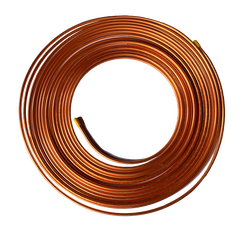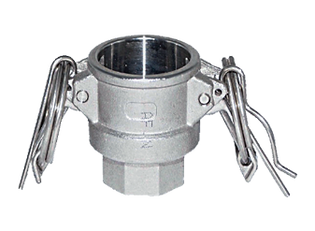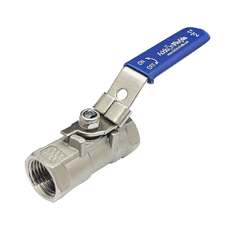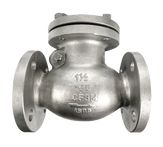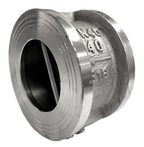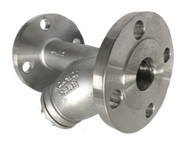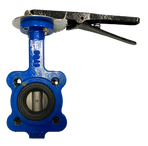Let's learn more about AF Hydro
Addison Fluids, also known as AF Hydro is a company established in 2016 and situated in Singapore. The company specializes in the production and distribution of various valves types such as check valves, strainers, ball valves, and so on. The products are made from materials such as stainless steel, cast steel, forged steel, brass, and cast iron. Since its establishment, Addison Fluids has specialized in creating an effective chain of quality products with an effective flow of service for clients. Addison fluid is a local brand operating in Singapore, however, the company has maintained constant support for various industries by supplying quality products manufactured by them.
1. What is history of Addison Fluids (AF Hydro)?
Addison fluids were established in 2016 in Singapore. The company specializes in the production of various valves such as ball valves, check valves, y-strainers, and many others. The company maintains effective relations with customers directly as it is operated as a local brand which makes it relate closely with customers. The various valves produced by the company are made from materials such as stainless steel, cast iron, forged steel, cast steel, and brass. All these materials are known to be quality exhibiting different forms of strength, however, generally, they are very durable and are designed to guarantee the utmost safety of operators and the machines too.
The finished products from the company are subjected to tests following various standards and specifications of the in-house quality management system. The various products from Addison Fluids are applied in the flowing industries listed below:
Generally, the Addison Fluids company has produced over 2000 standard products which are classified into three groups as shown below:
The finished products from the company are subjected to tests following various standards and specifications of the in-house quality management system. The various products from Addison Fluids are applied in the flowing industries listed below:
- Construction Industry
- Water Treatment Works
- Engineering and Offshore
- Chemical Industries
- Pharmaceutical industry
- Refinery, Oil, and Gas
- HVAC Industry
Generally, the Addison Fluids company has produced over 2000 standard products which are classified into three groups as shown below:
- AF Tubes
- AF Valves
- AF Fittings
2. What is the Quality Control Process applied by Addison Fluids (AF Hydro)?
To achieve the main objective and goal of the company, Addison Fluids has formulated an internal pressure rating testing for each group of products manufactured based on the heat number. This is done to ascertain the effectiveness of the valve quality control process. The test is carried out based on the heat number of the product to check for leakages and ensure the working pressure requirements are met based on the standard used before the products are delivered to clients.
The total testing ratio for new products is calculated at 2%.
The table below shows the quality control processes carried out on each batch of products:
The total testing ratio for new products is calculated at 2%.
The table below shows the quality control processes carried out on each batch of products:
|
3. What is Addison Fluids testing standard?
Addison fluids are tested following the API 598 standards. API is an acronym signifying the American Petroleum Institute. This standard gives specifications for testing and inspection methods for low-pressure balls valves, gate valves, butterfly valves, check valves, and globe valves.
The API 598 testing standards also show the shell and backseat tests, this is to ensure no leakage whatsoever can occur on the body of the valves, on the joints, or body liner. After this test is done, there will be no visible leakage traits on the body such as wet spots or drops of process fluids during operation. The test is a hydrostatic test of 1.5x calculated on the minimum cold working pressure rate of the valve.
For liquid tests, 1 cc and 1 milliliter have a corresponding value of 16 drops. So, the test states that there shall be no leakage permitted for the minimum specified test time for the valve. 0 drop signifies that there was no drop of fluids within the time limit during the test. On the other hand, the 0 bubble signifies that less than 1 bubble of the minimum given test time is allowed for the gas test.
The table below shows the API 598 (9th Edition 2009) rates for Valve seat Leakages for all Metal-Seated Valves asides Check Valves:
The API 598 testing standards also show the shell and backseat tests, this is to ensure no leakage whatsoever can occur on the body of the valves, on the joints, or body liner. After this test is done, there will be no visible leakage traits on the body such as wet spots or drops of process fluids during operation. The test is a hydrostatic test of 1.5x calculated on the minimum cold working pressure rate of the valve.
For liquid tests, 1 cc and 1 milliliter have a corresponding value of 16 drops. So, the test states that there shall be no leakage permitted for the minimum specified test time for the valve. 0 drop signifies that there was no drop of fluids within the time limit during the test. On the other hand, the 0 bubble signifies that less than 1 bubble of the minimum given test time is allowed for the gas test.
The table below shows the API 598 (9th Edition 2009) rates for Valve seat Leakages for all Metal-Seated Valves asides Check Valves:
|
The next table shows the API 598 (9th Edition 2009) rates for Valve Seat Leakages for Check Valves:
DN (mm) |
NPS (in) |
Liquid Test (cc/min) |
Gas Test (m3/min) |
≤ 50 |
≤ 2 |
6 |
0.08 |
65 |
2 1/2 |
7.5 |
0.11 |
80 |
3 |
9 |
0.13 |
100 |
4 |
12 |
0.17 |
125 |
5 |
15 |
0.21 |
150 |
6 |
18 |
0.25 |
200 |
8 |
24 |
0.34 |

